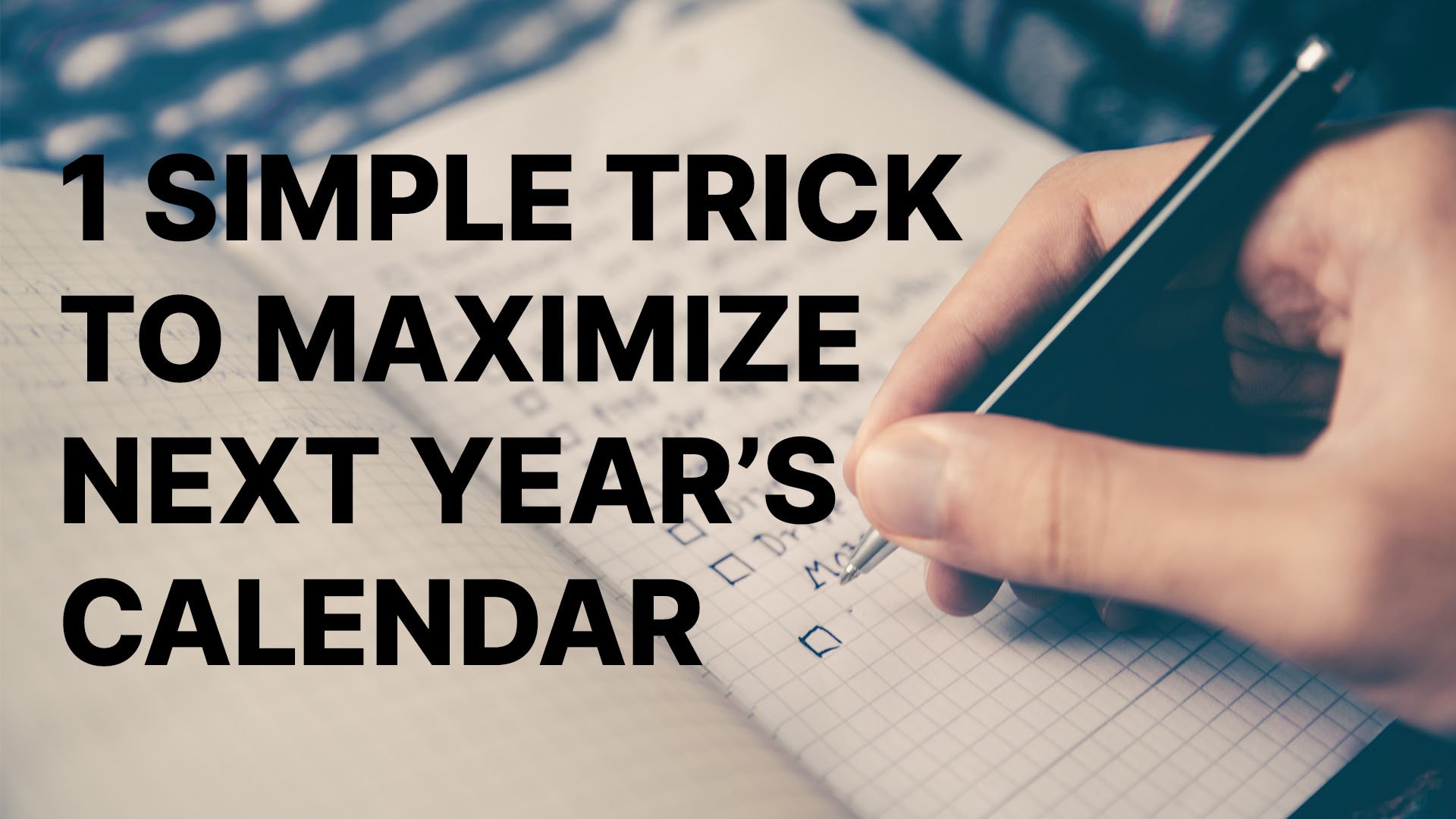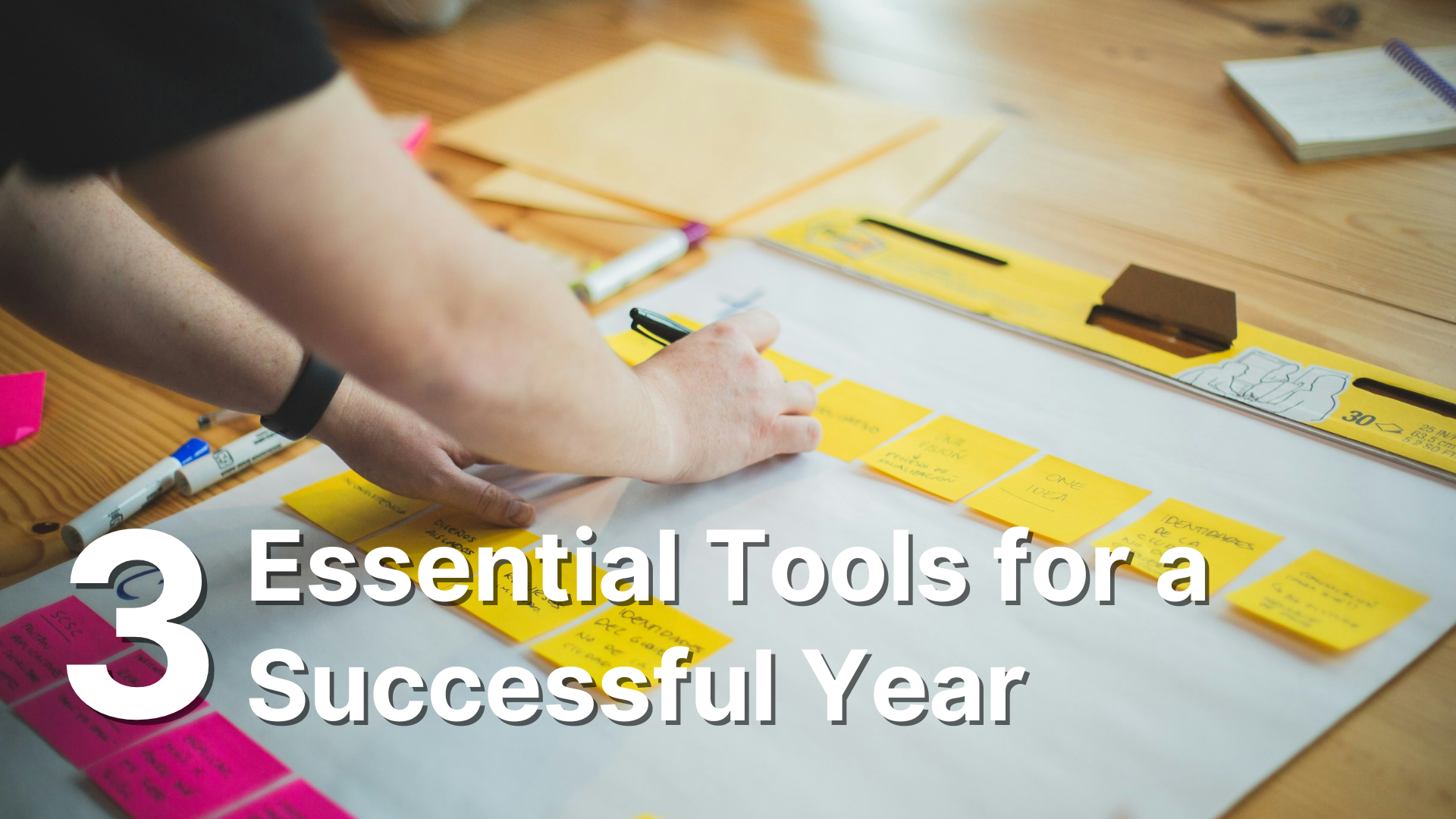1 Simple Trick to Maximize Next Year’s Calendar
Photo by Glenn Carstens-Peters on Unsplash
Over the last several weeks, I’ve posted about planning for next year. You can read about calendar planning here and budget planning here.
If you’ve been doing this for a while, you may realize that just putting dates on a calendar doesn’t mean it’s going to happen.
Early one September, I was going through my to do list for the week and a calendar reminder popped up. “K-Team Starts”
Uh-oh.
I wasn’t ready. I needed to send out invites, advertise to kids and parents, buy materials, and everything else.
What's worse is I had spoken with several parents about it already. They were excited for it to begin. And here I was looking at not just an event, but a whole class. One that I had done nothing to make it happen.
That’s when I decided to implement this one simple planning trick to make sure something like this never happened again.
Plan backwards.
Let me explain.
The November before my K-Team disaster, I put on my calendar “K-Team Starts” for the weekend after Labor Day, and then I moved on.
However, planning backwards means I start with that event, think about what needs to happen before, and then add those tasks to my calendar.
Here’s how to do it.
1. Make a list of all the tasks that need to be done
Staring at a blank calendar can be as intimidating as staring at a blank page. You don’t even know where to start.
I suggest before putting dates on anything, write down all the tasks that must be done to make that event happen. This is the brainstorming phase, so there’s no wrong answers. However, don’t get bogged down in the nitty gritty. If the event is at a ten-thousand-foot view, you’re shooting for five thousand.
For my K-Team class the list would look like this:
Buy binders
Print materials
Send letters to parents
Write the letter for parents
Create graphics to advertise
Go over class materials
Set up payment options
Close registration
2. Consolidate tasks and put them in chronological order
Not everything from the above list will end up on my calendar. I’ll combine some and drop others. I’m setting myself up to create clear reminders for my next step.
But before I get there, I’ll rearrange the tasks in chronological order. It’s like setting up dominos. You know where you want the last domino to fall, so you need to set up previous ones to get that result.
My list now looks like this.
Create graphics to advertise
Write the letter for parents
Set up payment options
Send letters to parents
Close registration
Buy binders
Print materials
3. Place them on your calendar and set reminders
One time at VBS we needed to freeze a giant block of ice for Friday’s closing session. My wife was the supplies manager and was very concerned about how and when we’d make something like this. On Monday night while we were saying good night, she nervously alerted me to the problem and wanted a solution right then.
I told her that’s a Friday problem, we’re only working on Monday problems.
To be fair, we had to get started on Wednesday to make sure the thing was frozen in time, however it wasn’t as urgent as she made it sound.
Take some time going over your list and put your tasks on appropriate dates in the weeks and months leading up to the event.
Some of the things can be completed in one day, while others need to be spaced out to allow for shipping and/or production time.
Also, don’t do all the work for a September event in January or similarly, the day before it’s supposed to start. Both of those are recipes for disaster and anxiety. You have enough to worry about. Don’t create more stress for yourself.
After you’ve picked the dates for when the tasks need to be done and placed them in your calendar, make sure you set up a reminder. I use a digital calendar that sends pop ups to my phone and my computer.
I usually put my tasks on the first workday of the week and set my reminders to go off at the beginning of the day. This way the task makes it to my to-do list and actually gets done.
Think of it like a gift to your future self. You’ll thank yourself when the time comes.
4. Evaluate for next year
Sometimes you can do all the planning and think you’ve prepared for every contingency, but I like what Helmuth von Moltke the Elder once said:
No plan survives contact with the enemy.
Once you’ve done your event whether for the first time or the umpteenth time, there’s room for improvement. Go back through your plan and adjust.
Were tasks out of order?
Did you need to get started earlier?
Did you start too early?
What tasks were omitted?
What tasks need to be added?
Try not to do this alone. Talk it through with your team as you evaluate and plan for next year. You can read about event evaluation
If you want to be more effective in ministry, have less stress, and look like an organizational guru, this one trick can get you there.
Your events will be better planned, you’ll be less harried, and you can focus on the things that really matter, like your relationship with God and people.
Happy planning!




When I first started out in kidmin, I felt like I was alone. I’d served two internships in children’s ministry. And I still had a good relationship with the kid’s pastor who guided me on my last one. However, I didn’t know what I didn’t know.
Fast-forward a year in and I was drowning. I thought I had it all under control, but elementary was the David Reneau show. Wednesday night was holding together with a hope and a prayer, and don't’ even get me started on Nursery.
I needed help, but I didn’t know where to look